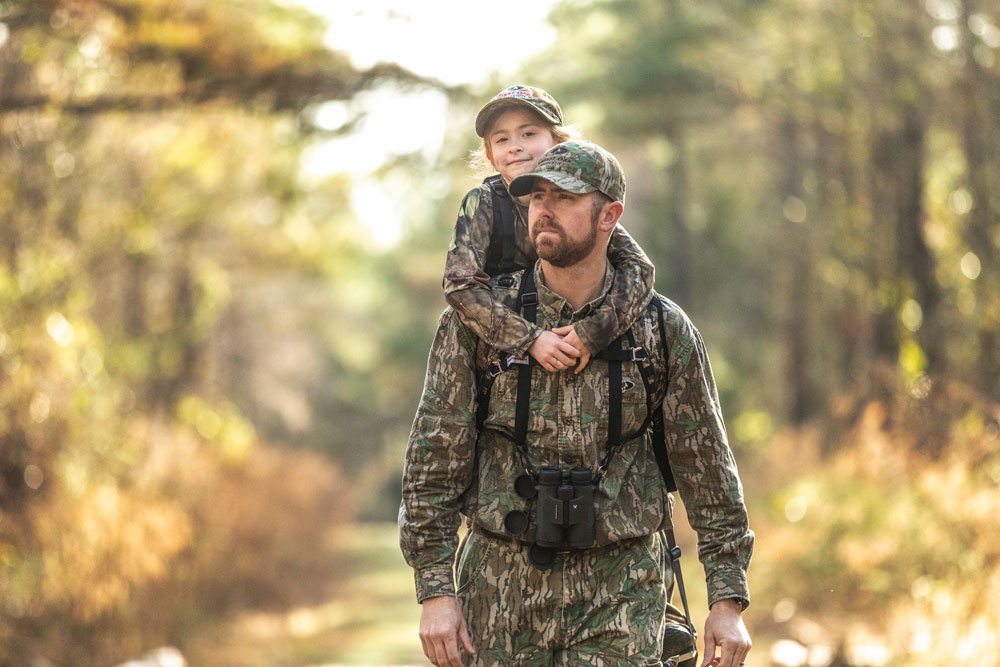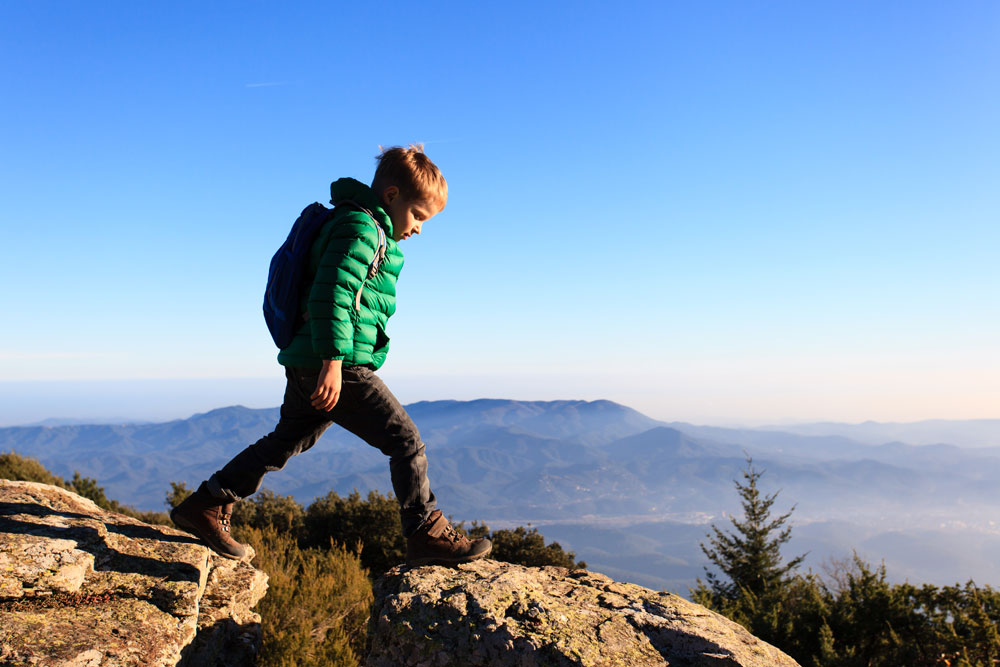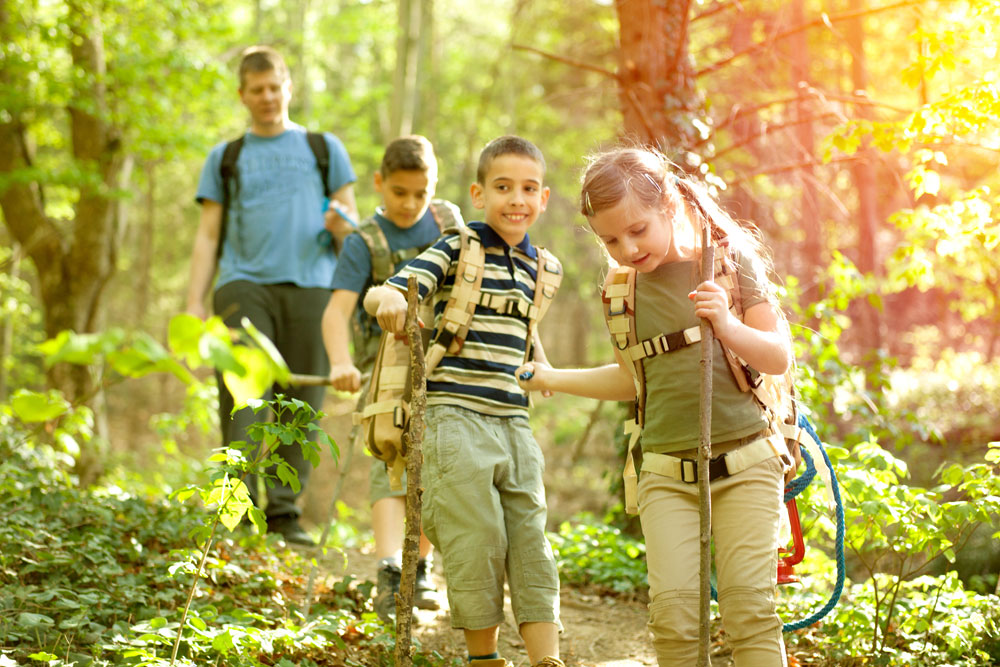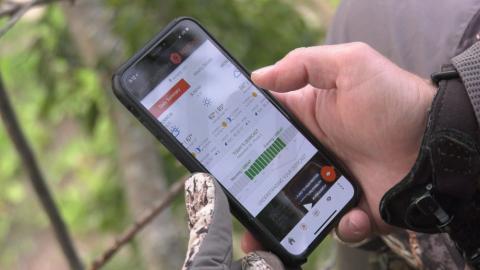Considering a hiking trip with kids? While heading out with kids for the first time can be intimidating, hiking with your little ones can also be extremely rewarding. You can watch them explore the great outdoors and encounter wildlife, all while experiencing the benefits of the trail for yourself. Here are seven ways to prepare for your family hiking trip.

1. Be realistic
Be honest about where you and your kids are in terms of age, ability and fitness. We all start somewhere, and there’s nothing wrong with a test run to make sure everybody enjoys it. A shorter hike that everyone enjoys is far better than biting off far more than anyone can chew and having to run back to the parking lot as it’s getting dark.
This goes the other way as well. If you feel like everyone in your family is super keen to hit the trail, plan something that will not only maintain your family’s interest but will also be challenging enough to be rewarding.
The more enjoyable the first hike is, the more likely your kids are to love hiking in the future. Enjoyable first experiences can, in turn, help foster a natural passion for conservation and the great outdoors.
2. Consider the trail
Part of being realistic with your expectations includes considering the length and terrain of the hike.
How steep is the trail?
- Do your kids run up the stairs at home every chance they get or would they prefer walking on flat ground?
What’s the terrain like?
- Are you hiking with toddlers? Are there boulders bigger than your two-year-old all throughout the trail?
- Do you feel comfortable carrying a wearied two-year-old over these boulders?
- Conversely, do you have older kids who love to scramble over rocks?
- What kind of shoes do you all have? Are you choosing a terrain that is safe for your footwear?
How long is the trail?
- Remember, steepness and terrain play a massive factor in how long a trail feels.
- If you’re climbing uphill over boulders for two miles, it’s going to feel a lot longer than walking for three miles on the flat.
- How much daylight do you have to work with? How many breaks do you think you’ll need, given the trail’s terrain and steepness? How much can you realistically expect to complete?
3. Plan ahead
Your family hiking trip is much more likely to be enjoyable and safe if you plan ahead well. Here are some features of proficient planning:
Let two people know where you and your family are planning to hike.
Check the weather ahead of time
- Especially if you’re hiking in the mountains, a desert gully or even a ravine, double-check there are no flash flood warnings and that you know the signs of flash flooding.
Pack layers
- Even if it’s a day hike in a reasonably warm location, remember that if someone gets hurt, you might have to stop for several hours. If this happens, sweat will dry and little hikers will cool down quickly.
- Many hot places cool off considerably at night, with deserts going through some of the most radical temperature swings. While certainly don’t plan to get caught out overnight, preparedness is key in any emergency scenario.
Bring water
- The fluids everyone will need will depend very much on temperature, humidity, terrain and length of the hike.
- Check your local park, state park or national park’s site recommendations for fluid intake on trails. Talk to your local ranger to help you accurately estimate your needs if you’re unsure.
Don’t overpack
- While you want to bring extra layers and enough water, remember not to overpack. A lighter load will help everyone enjoy their time a little more.
4. Use bug repellent and check for ticks
Getting eaten alive by bugs isn’t fun, but neither is coating yourself in layers of toxic bug repellent. Choose a non-toxic, natural mosquito repellent for your family hiking trip. Look for a mosquito repellent that also says it repels ticks.

Regardless, it’s always a wise move to check for ticks after your hike, especially if you’re walking in the woods. Ticks can carry Lyme’s Disease, but if you remove ticks immediately, the risks are negligible. Check all over, but especially look at ankles, legs and behind the knees or in hip creases.
5. Get your kids used to walking (or being carried) ahead of time
If you can, try getting your kids used to walking for slightly longer distances. Go on family walks through your neighborhood. See how they do. Gauge their endurance and their interest level while also remembering a trail with wildlife is usually more exciting and motivating than a neighborhood walk.
6. Pack adequate food
Remember to pack enough snacks or meals to get you and your family through the day, plus extra. If for whatever reason your hike is delayed, you want to make sure you have enough.

Again, how much you pack will very much depend on the hike you’re taking. If it’s just a couple of miles on a heavily trafficked trail, some trail mix and some back-up energy bars will probably do. However, if you’re taking your older kids on a 10-mile hike through the mountains, pack sandwiches, energy bars and trail mix.
Regardless of the length of your hike, always bring some “survival rations” just in case you end up getting delayed somewhere longer than you intended. On longer hikes, bring bigger survival rations. A two-mile hike on a flat, well-trafficked trail probably would only call for a few spare energy bars. However, for the 10-miler, it would make sense to bring at least 1,000 extra calories per person in the form of something dense, like chocolate.
7. Bring a first aid and survival kit
Many stores sell “survival kits” and “first aid kits,” but what actually makes a good first aid and survival combo?
Again, it depends on your hike. Here are a few lists for different situations. Consider storing your first aid kit and spare layers in a dry bag inside of your backpack. Band-aids don’t do much good when they’re already wet.
Shorter hikes (less than 4 miles)
- Band-aids, blister band-aids, antibiotic ointment, a knife to cut clothes away from a bad cut or wound, water to rinse cuts, survival bandage (also called an Israeli bandage), inhaler or EpiPen if necessary, triangular bandage and rain gear.
Medium hikes (4-10 miles)
- All of the above, plus perhaps an ace bandage, rehydration packets (powder that includes electrolytes in case of dehydration) and hand warmers. Consider bringing a lightweight tarp for an emergency shelter.
Longer hikes (anything over 10 miles)
- All of the above but include an emergency bivvy bag and an emergency shelter.
Conclusion
Regardless of the length or intensity of your family hiking trip, these seven tips should help keep you and your family happy, healthy and safe. Enjoy exploring the great outdoors with your kids and watch them encounter nature in a new and beautiful way.



























